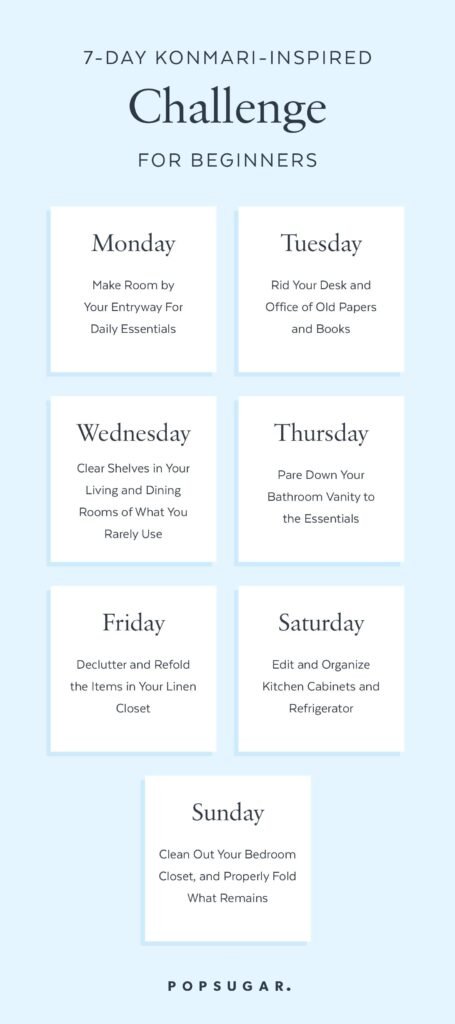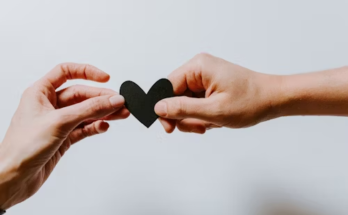
People who complete KonMari often report being less likely to buy new items afterwards. This may be because their perception of their belongings changes: they no longer see jewellery trays and toiletries storage as superfluous or money-wasting purchases.
They assess each item for its ability to spark joy, starting with clothing before moving on to books, papers, and finally miscellaneous (kimono in Japanese).
Clothing
KonMari Method followers usually start with clothing. Their goal is to select only those pieces that truly bring joy, as defined by Kondo. Once all of their clothes have been collected in one pile, individuals can then decide which items will remain and which can be donated or discarded; when making this decision, it is important to take into account lifestyle considerations.
Once you have decided which clothes to keep, the next step should be sorting them into an organized storage location. This process provides an ideal chance to consider how you want your closet and drawers organized over time and discover potential solutions. For instance, if there is plenty of drawer space but little room for hanging clothes, you may require new hangers or additional shelving units.
Another critical component of the KonMari Method is sorting by category and completing each category before moving on. When picking up each item, hold it and see if it sparks joy – otherwise, it should likely be donated or thrown away. When done, please take a moment to thank every item that served its purpose in your life and express your thanks for serving its purpose so well!
As you sort through your clothes, it is wise to set aside time to fold and store them properly. Folding vertically rather than stacked horizontally will help prevent wrinkles in the fabric from getting wrinkled more quickly. Furthermore, when using storage solutions such as holders for jewellery or apothecary jars for toiletries to store items, be sure that each has its own dedicated space—this way, your home will not become an unorganized jumble and helps you quickly locate what you need!
Books
KonMari’s organizing method may be best known for its clothing-focused approach, but its application to other areas of your home is limitless. From jewellery trays and apothecary jars for toiletries to shelves filled with mementoes and shelves for mementoes – each item that has its own designated space tends to return as though drawn by the magnetism that also holds with books – whether they be romance novels from your Little Library box or the new hardcover copy of Where the Crawdads Sing.
Marie suggests starting by purging items that are straightforward to discard while leaving sentimental items for last. This way, you can gain confidence in your decision-making abilities while working through each category and discovering more of your values and priorities.
Marie’s first step in books is simple – collect all your titles into one location and sort through them. She instructs her students to handle each book individually and ask themselves whether it brings joy; if so, keep it or discard it accordingly. At this stage, many book enthusiasts may start feeling uncomfortable; after all, we love our books!
Step Two of organizing books by category involves grouping them by subject. Books in your home can be organized in several ways; she suggests stacking vertically on bookshelves alphabetically for easy browsing while saving space. This helps make finding books simpler while saving space on your shelves.
When organizing books using the KonMari method, it’s important to remember that this doesn’t preclude storing electronic books on devices. However, should you decide to do so, we would advise downloading some ebook management apps to monitor how many you have stored and ensure your library doesn’t exceed capacity.
Papers
Kondo suggests organizing papers in the following categories in her clothing order: books, papers, kimonos, and sentimental items—it can be daunting! Your goal should be to gather all documents in your home—including those stored in filing cabinets or storage bins—into one pile. Pick each piece up individually and see if it sparks joy when picked up—otherwise, discard it. Any documents kept should be filed neatly, while an “upcoming” box should be designated for those that require attention shortly.
Step four in your paper purge process should involve sorting through and organizing any sentimental items that are lingering around. This may include love letters, children’s artwork and any memorabilia from special events or relationships that are taking up space in your space. Although these can be hard to get rid of, what matters is finding what brings joy to you and then finding ways to display or store those pieces within your home.
KonMariers report experiencing significant changes to their relationship with material possessions and an improved sense of what sparks joy for them throughout their process with KonMari. Many report less shopping and a greater willingness to pass up items they do not need. However, this shift may not be directly caused by KonMari but is more likely the result of alternative consumption movements that seek a more mindful approach to shopping [2].
Even after an initial increase in disposal, KonMariers are gradually adopting a different mindset about what they need in their lives and are beginning to embrace sufficiency instead of consumption. But it remains too soon to tell whether the KonMari method is actually leading to less consumption, given that interviewees reported continuing at their previous consumption levels after finishing their tidying festival. This is likely because most individuals are motivated more by personal benefits rather than sustainability-related outcomes (Khamis calls this the “aestheticization of restraint”).
Miscellaneous
The KonMari Method encourages people to organize their possessions by category. This allows you to see the volume and compare like items before making decisions about them and keeps you focused on those that bring joy rather than their location in your home. Kondo recommends starting with clothing before progressing through books, papers, and miscellaneous items and disposing of those that do not spark joy (kimono). She even has specific advice for discarding to prevent people from going back over an item multiple times!
The KonMari Method stresses the importance of handling each item individually when sorting your possessions. This is especially crucial when sorting through items in the “Komono” category – including kitchen utensils, cleaning supplies, technology cords, skin care products and more – to make informed choices about which to keep, donate or discard.
KonMari Method suggests imagining your ideal life and surrounding yourself with items that support it. Letting go of items with sentimental value may be difficult, so this method suggests thanking each one before giving it up.
The KonMari Method aims to simplify life so that people can spend more precious moments with family and friends. Adams and many other KonMari Cleanout participants have found that this change of perspective has led to happier, more satisfying lives.
If you’re curious to try the KonMari Method, there are numerous resources to get you started. Marie Kondo herself wrote a book and hosted the Netflix series Tidying Up with Marie Kondo to guide families and individuals through their KonMari cleaning projects. Additionally, online communities are dedicated to this approach, where members share advice from others who have successfully purged their belongings.




